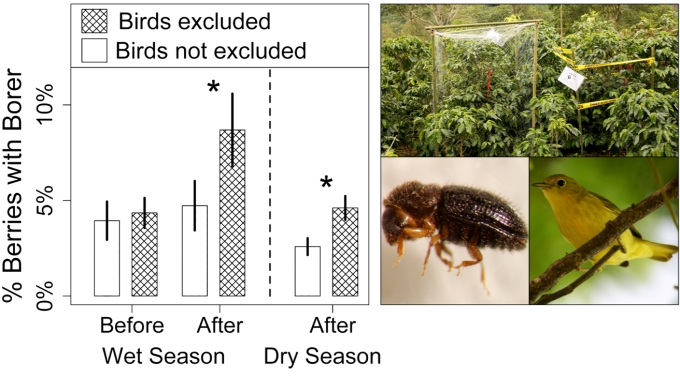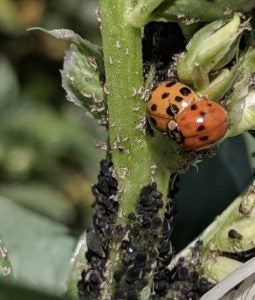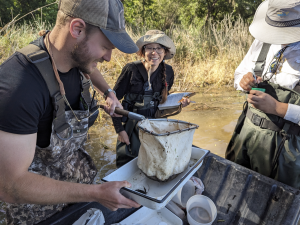Valuing the benefits that wildlife provide to farmers could incentivize conservation in working landscapes. As insects destroy 8–15% of crops globally, much of our research focuses on how conservation could mitigate pest outbreaks on farms. For example, we have shown that conserving natural habitat around farms may bolster the natural enemies of coffee pests, resulting in fewer pests and higher yields (Figure 1).
Fig. 1: Excluding insectivorous birds from coffee plants doubled yield loss from coffee’s most damaging insect pest. Pictures depict bird exclusion treatments (top), the coffee berry borer beetle (bottom left), and a Yellow Warbler (bottom right), one of the species shown to consume berry borers.

In 2020, we worked as part of a larger team at the Socio-Environmental Synthesis Center to design decision-support tools that would help managers visualize how habitat conservation affects insect pests worldwide. Our team compiled the most comprehensive global pest-control database of its kind, with 132 studies across 6789 sites in 31 countries. Qualitative and quantitative analyses of this database upended an agroecological paradigm by suggesting that the effect of natural habitat on pests is incredibly context-dependent (rather than being uniformly beneficial).


Our subsequent work has sought to explain these surprising findings. One possibility is that some pests actually benefit from natural habitats. For example, we found Lygus pests build up in non-crop habitats during winter but then disperse to vulnerable cotton crops when natural habitats dry down in spring. Another possibility is that very large databases are needed to uncover landscape effects due to high levels of population stochasticity amongst pests. Supporting this, we found that natural habitat around olive groves reduce fruit fly infestations below spray thresholds. Fly populations are also less abundant and variable in more natural landscapes, but we could only detect these result because we had 13 years of pest surveys across 1300 orchards.
Ongoing work
We are currently working on a USDA-funded project to build a global data repository that will integrate academic studies with ‘big data’ from governments and industry. By doing so, we hope to create the resources needed to unpack pest ecology and develop tools for predicting pest outbreaks across landscapes.
 We are also beginning to explore pest control outside agricultural systems. For example, our lab is participating in a large collaborative project focused on assessing whether changing the hydrology of managed wetlands could help promote predatory aquatic invertebrates, reduce mosquito populations, and thereby alleviate the need to spray costly insecticides.
We are also beginning to explore pest control outside agricultural systems. For example, our lab is participating in a large collaborative project focused on assessing whether changing the hydrology of managed wetlands could help promote predatory aquatic invertebrates, reduce mosquito populations, and thereby alleviate the need to spray costly insecticides.